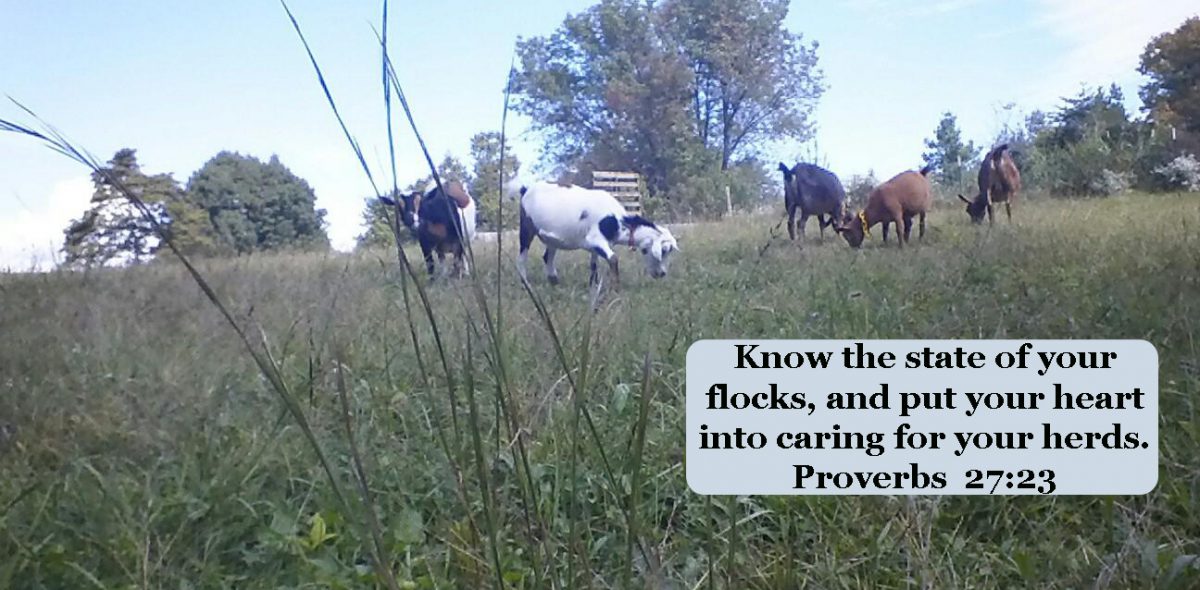We decided to add livestock guardian dogs (LGDs) to our farm about three years ago. We have definitely seen the benefit of having these dogs with our family and our animals. We have had some headaches too, and I will write more about that later. But this morning our Great Pyrenees LGD Crowley gets kudos. However, I failed my poor dog this morning. At least four times.
Our LGDs bark in a fast pattern when they see a threat from a distance, while running towards it. Once they get close they will bark a consistent, deep bark every few seconds. Their bark does a couple of things – lets the predator know that it is not going any further, and signals any other working dogs in the area to be on alert (or in this case, his human.) Basically – they call for backup when needed. I often hear my dogs barking back and forth with my mom’s pyr across the road. Many times I will hear our pyr Dexter bark in the field where he lives with our male goats. Crowley will break into a fast run immediately towards him to see what is going on.
This morning I was awakened, 20 minutes before my alarm of course, by Crowley’s incessant barking. I was not a happy camper and figured he would stop, because usually the threat will run away when approached by them. It was very close to the house, so I didn’t worry that it was a bigger threat than he could handle alone, like a coyote or another dog.
Finally after about 10 minutes I got up and went to tell him to knock it off. I walked outside to find this:

Crowley was pretty happy to have the threat contained.
This raccoon was about 20 feet from my daughter’s show rabbits and chickens. Her chickens are bantams and I can guarantee it would have killed at least one if not more. Crowley no doubt took chase and the raccoon panicked and ran into the cone instead of up the tree that was 3 feet away. A little unusual for a raccoon – but perhaps Crowley caught him off guard and he didn’t have time to run. Crowley was circling the cone, constantly barking.
I tried unsuccessfully to get him out by holding Crowley back with me and giving him lots of room, and by turning the cone away from us. He wouldn’t even try to come out. I started scooting the cone towards the wood line with my foot. He even fell out once but he went right back in. Crowley had positioned himself about 15 feet away from me and the raccoon couldn’t even see him. I flipped the cone around, thinking I could use a long broom handle to pry him out so he could leave. He charged at me – again unusual for a raccoon that has a perfect chance to run. When the raccoon charged at me Crowley instantly started to go for him. I called him off and at that point decided I needed to get my gun. I went in the house and when I came back Crowley had disappeared and the raccoon was slowing going up a tree. I never had a chance to get a good shot after that.
So, while I’m happy with Crowley, I’m frustrated with myself in many ways.
Number one – I should have gotten up right away when I heard the tone of Crowley’s bark. He was telling me that something was wrong and it was not going away.
Number 2 – I didn’t take my gun outside with me. I honestly didn’t think about there being a threat and foolishly wasted time by having to run in and get it.
Number 3 – This raccoon was displaying some unusual behaviors. He was out in the daylight, he was ready to fight me or Crowley instead of retreat when he had perfect opportunities, and he was moving with an unusual gait. Those things may be nothing, but any unusual behavior in an animal that survives due to instinct says possible rabies to me. Crowley and Dexter are due their rabies shots. Refer back to Number 2 – I should have been armed.
Number 4 – when I would give Crowley a command, he acted like I was punishing him, even though he was instantly obedient. I forget how these dogs communicate so well, and he was picking up on my stress and taking it personally. I realized I need to work with the boys more on behavior training. I want them to be obedient, but not think I am displeased with them if I tell them to stop or get back.
So – all in all it ended well except we have a raccoon around that may or may not be healthy. I will have to get a trap and try to find it. I am thankful that Crowley did not kill it because he could have been bitten. We are very fortunate to have such good protectors.


